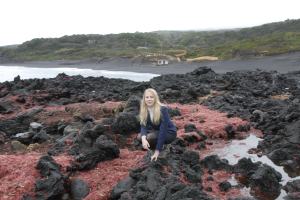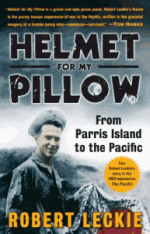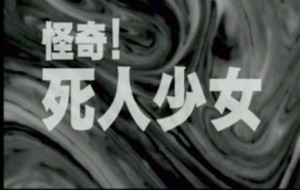5. An accurate depiction of battle, of course. Unfortunately, film can only go so far when it comes to recreating battle. One of the most important features of the battlefield that is absent in film is the smell. Movies cannot show us what the smell of rotting flesh, discarded food, gunpowder, spent artillery, and burnt rubbish must have been like.
“Occasional rains that fell on the hot coral merely evaporated like steam off hot pavement. The air hung heavy and muggy. Everywhere we went on the ridges the hot humid air reeked with the stench of death. A strong wind with no relief; it simply brought the horrid odor from an adjacent area. Japanese corpses lay where they fell among the rocks and on the slopes. It was impossible to cover them. Usually there was no soil that could be spaded over them. Just the hard, jagged coral. The enemy dead simply rotted where they had fallen. They lay all over the place in grotesque positions with puffy faces and grinning buck-toothed expressions. It is difficult to convey to anyone who has not experienced it the ghastly horror of having your sense of smell saturated constantly with the putrid odor of rotting human flesh day after day, night after night.”
– With the Old Breed, by EB Sledge at Peleliu
4. More significantly, I would like to see an accurate depiction of the natural environment that the soldiers faced in the Pacific. The Marines not only had to face the Japanese soldier, but contend with the nature of the environment as well. Malaria, jungle rot, heat exhaustion, etc.
“Glad to leave the stinking foxhole, I got up and carefully started down the slippery ridge. My buddy rose, took one step down the ridge, slipped, and fell. He slid on his belly all the way to the bottom, like a turtle sliding off a log. I reached the bottom to see him stand erect with his arms partially extended and look down at his chest and belt with a mixed expression of horror, revulsion, and disbelief. He was, of course, muddy from the slide. But that was the least of it. White, fat maggots tumbled and rolled off his cartridge belt, pockets and the folds of his dungaree jacket and trousers. I picked up a stick and handed him another. Together we scraped the vile insect larvae off his reeking dungarees.”
– With the Old Breed, EB Sledge in Okinawa
3. Hierarchy and Class Relations within the 1st Marine Division – something that might get glossed over in many books and films about war is the inherent division between enlisted man and officer. The difference between a commissioned officer and an enlisted man (or NCO) was usually always a matter of socio-economic class and education, not experience or ability. In both Helmet for My Pillow and With the Old Breed the enlisted men express a general disdain for officers…at least for the less competent among them. I am interested to see if The Pacific keeps many of the incidents between enlisted men and officers described in the books.
“He [a doctor] began to question me about my experiences in the war, and, as I told them to him, he shook his head from side to side, as though to indicate that my whole division, not only myself, ought to be psychoanalyzed. Then we talked of books for he was well read, and philosophy. Suddenly he broke it off and said, “What did you say you were?”
“A scout,” I said proudly. “I used to be a machine gunner.”
“But that’s no place for a man of your caliber.” Now I was shocked! The old shibboleth, intelligence! Had not our government been culpable enough in pampering the high-IQ draftees as though they were too intelligent to fight for their country? Could not Doctor Gentle see that I was proud to be a scout, and before that a machine gunner? Intelligence, intelligence, intelligence. Keep it up, America, keep telling your youth that mud and danger are fit only for intellectual pigs. Keep on saying that only the stupid are fit to sacrifice, that American must be defended by the lowbrow and enjoyed by the highbrow. Keep vaunting head over heart, and soon the head will arrive at the complete folly of any kind of fight and meekly surrender the treasure to the first bandit with enough heart to demand it.”
– Helmet for My Pillow, Robert Leckie at a hospital before Peleliu
2. A fair and realistic depiction of Japanese soldiers. Japanese soldiers were not fanatics, nor were they all brainwashed into worshipping the emperor as a god. Though they were prepared to die for their country, letters and diaries written by Japanese soldiers show that as they prepared to face death their thoughts were for their families and countries, not the emperor. However, the fact that American soldiers could not understand the extreme determination of Japanese soldiers is part of the reason why the war in the Pacific was so frustrating and difficult.
“Four Japanese soldiers and one officer has been taken alive, and had been brought down to the C.P., their arms bound behind them, knives at their throats, and from them we learned that the 3rd Company, 53rd Regiment of the Japanese 17th Division had been dispatched from the main body at Cape Gloucester to Tawali to defend against our landing.
Their passage had been through near impenetrable jungle and they had not arrived on the scene until two days after our own coming. Nevertheless, they attacked us. They attacked us, some one hundred of them against our force of some twelve hundred, and, but the prisoners, we had annihilated them. Were they brave or fanatical? What had they hoped to gain? Had their commander really believed that a company of Japanese soldiers could conquer a battalion of American Marines, experienced, confident, better armed, emplaced on higher ground? Why had he not turned around and marched his men home again? Was it because no Japanese soldier can report failure, cannot “lose face?”
I cannot answer. I can only wonder about this fierce, mysterious enemy – so cruel and yet so courageous – a foe who could make me, in his utmost futility, fanaticism, if you will, call upon the best of myself to defend against him. ”
– Helmet for My Pillow, by Robert Leckie in Guadalcanal
1. An honest depiction of the level of cruelty both Japanese and American soldiers were capable of. The war in the Pacific was a brutal war and that brutality led men on both sides to do things considered unimaginable in other circumstances. On the Japanese side, the harsh discipline and training that soldiers underwent definitely helps us understand why they were capable of now infamous acts of brutality.
“Once on another patrol, I saw him taking great pains and efforts to position himself and his carbine near a Japanese corpse. After getting just the right angle, Mac took careful aim and squeezed off a couple of rounds. The dead Japanese lay on his back with his trousers pulled down to his knees. Mac was trying very carefully to blast off the head of the corpse’s penis. He succeeded. As he exulted over his aim, I turned away in disgust.”
– With the Old Breed , by EB Sledge at Okinawa
It only takes the opening theme of Band of Brothers to make me cry. Now, I can add The Pacific to that list. I am not embarrassed to admit this, because anyone who is not brought close to tears when they think about World War II is guilty of either the grossest ignorance or the most unforgivable callousness. WWII (I won’t object to adding WWI as well, especially if you adhere to the ‘30 year war’ interpretation) was the most cataclysmic event of the 20th century and, arguably, of mankind’s entire history. And, personally, the Pacific theater of WWII is the closest thing I can think of when I try to imagine Hell.
I spent the majority of the last two years of my undergraduate degree studying WWII, specifically the Pacific theater. I have been reading books about the subject far longer than that. Yet, I have barely scratched the surface. I don’t even dare consider myself an amateur WWII historian; academics devote their entire careers to the subject. But, I know enough about the subject to be able to spot the annoying inaccuracies contained in nearly every movie ever made about the conflict…or to question the way filmmakers choose to portray it.
This is why I have tremendous respect for Steven Spielberg, Tom Hanks, and everyone involved in Band of Brothers and The Pacific. More than attempting to produce cliché-ridden blockbusters that can be peddled off as commodities, they strive to bring historical accuracy and integrity to the filmmaking process. I believe that filmmakers have a personal responsibility to depict WWII as accurately and realistically as possible. And we, as the audience, have a personal responsibility to advance our understanding of the subject past whatever our high school US History class taught us. This applies not only to WWII, but to the subject of WAR in general. War is not cool. It is not glamorous or fun or badass. Even if it is necessary or unavoidable, it is still the single most unimaginably horrible and wasteful act that humans are capable of.
Past the accurate re-creation of battles, uniforms, environment, and technology, past the disturbingly realistic special effects, the makers of Band of Brothers and The Pacific never forget (and never let the audience forget) that they are depicting real events and real people, not fictional characters and exaggerated situations. Put simply, Band of Brothers and The Pacific represent simply some of the finest examples of historical and military filmmaking ever.
I have been anticipating the release of The Pacific for longer than I care to admit. I idolize Stephen Ambrose more than I care to admit. Now that it’s finally coming out, I am going to begin posting my thoughts on the miniseries as it airs.
The Pacific is based on With the Old Breed: At Peleliu and Okinawa by Eugene B Sledge and Helmet for My Pillow by Robert Leckie. It also draws on the books China Marine by Sledge and Iwo Jima: Red Blood, Black Sand by Chuck Tatum. I have read all of these books and will be comparing them with The Pacific as I post about each episode, with the exception of Iwo Jima: Red Blood, Black Sand. It is currently out of print and since I am no longer near my university library, I won’t be able to reference it. I will also be drawing information from Eagle Against the Sun: The American War With Japan by Ronald Spector, one of the finest and enjoyable pieces of historical scholarship on the Pacific War that I have ever read (despite its obnoxious cover). I highly recommend all of these books to anyone interested in modern history, military history, or WWII.
I hope that the people who read my blog will find these posts interesting and enjoy watching The Pacific as much as I will. The Pacific can be watched online at HBO’s website. As always, I encourage everyone to share their thoughts on the subject as well.
Japanese Imperialism 1894-1945 Review
In the space of 50 years, Japan built an empire that stretched from northern Manchurian down to the tip of Australia. Though its existence proved ephemeral, this was a staggering accomplishment for an island nation that had remained largely (though not completely) disconnected from the Western world until the mid-19th century and had only begun to modernize in 1868. In Japanese Imperialism 1894-1945, W.G. Beasley provides an overview of Japanese territorial expansion and imperialism, beginning with the Sino-Japanese War and ending with Japan’s defeat in the Second World War. In Beasley’s own words, the thesis of this book is as follows; “I do not believe the human impetus towards imperialism needs explaining…What the character of a society, or the international circumstances with which it has to deal, does indeed determine the timing and direction of the impetus, the degree of its success or failure, the kind of advantages that are sought, the institutions that are shaped to give them durability…That is what I propose to examine with respect to Japan” (Beasley, 13). This thesis struck me as vague and somewhat ill-defined. Essentially Beasley does not intended to examine why Japan attempted to carve itself an empire out of East Asia but how it did so. Much of this book is merely a summary of the conventional narrative on the subject with exhaustive references to names and dates. Ultimately, Beasley does not substantially contribute to the historical debate on the subject and merely synthesizes existing lines of thought. Upon turning the last page, the reader knows nothing more than the standard facts and is left to wonder what the point of picking up the book was in the first place.
Presumably set in Okinawa, Shiryo-gari (written and directed by Muroga Atsushi) is about an American military experiment on dead bodies that predictably results in a zombie outbreak. The hapless American soldiers enlist the help of Dr. Nakada (played by Kishimoto Yuji), a Japanese scientist who was involved in the original research, to help bring the situation under control. As luck would have it, a group of inept jewelry thieves, led by Jun (Asano Nobuyuki) and Saki (Shimamura Kaori) decide to use the isolated laboratory as a hide-out before the American soldiers can get there to clean up the mess.
I believe that the most difficult truth we must accept in our lives is that everything – the world, people, ourselves – changes. It seems redundant to state such a fact because of its obvious truth. Of course everything changes. Yet, like most important truths, the inevitability of change is both very easy to acknowledge in an abstract, intellectual fashion and exceedingly difficult to come to terms with in practice. Some changes are exciting and welcome; others are painful and unexpected. But one thing is certain – they will come. Be it with earth-shattering swiftness or at a slow creep that goes unnoticed until one day you wake up and find yourself irreversibly altered. They will come. And I have become convinced that it is our ability to confront and adapt to change that defines who we are as people.
Dead Girl Walking is one of six segments of a made-for-TV series called ‘Hino Theater of Horror,’ all adapted from the works of manga artist Hino Hideshi. Hino Hideshi dreams up pretty dark ideas for his manga and he ranks just below Junji Ito as one of the most important Japanese horror-gore manga artists. Yuri (Maeda Ayaka), a young student, suddenly dies from a heart attack…except she doesn’t die. Though clinically dead, she continues to think, act, and feel just like any other high school girl. She attempts to ‘live’ on, even as her body begins to rot. Her family, forced to live with an abomination and deal with her increasing stench, try a variety of ways to actually kill her. Unfortunately she is already dead, so their efforts are in vain. Despised by everyone, she runs away and becomes a homeless vagrant, her body slowly falling to pieces. Walking along the road, she gets picked up by a strange man and forced into some bizarre circus act, where she may or may not have been raped by a group of perverse business men. Ultimately her decomposition progresses so far that she can no longer move and her family douses her body in gasoline and burns her ‘alive.’ Then there is some sort of birth/death sequence and, finally truly dead, Yuri can rest in peace.










Recent Comments